Seed packets often have a little drawing labeled “seedling identification” on the back, so you can tell that what’s coming up is what you planted, not a weed. Or rather, so you can sort out what you wanted from among the weeds that are also coming up. Here for your convenience are seedling identification pictures of peas (snow peas or sugar snap peas, but all the peas I’ve planted look pretty similar at this stage) and beans (string beans as it were, but again, I don’t think there’s that much difference between string beans and lima beans, etc, at this stage.)
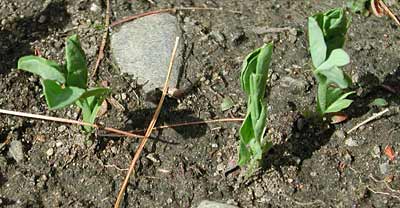
The ones above are the peas. It’s really too bad I didn’t get pictures a day or two ago. The seedlings come up all pointy and curled up, and uncurl and open out. The thing that amazes me is that the leaves have several leaflets as soon as they open. I guess that’s what makes them leaflets, that they’re already there as soon as there’s a leaf.
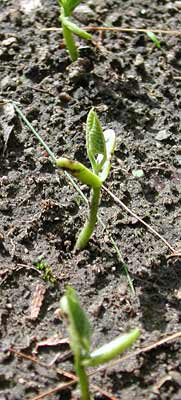
These are beans. The amazing thing about these is that the bean almost just splits in two and the halves stay there as the first leaves, after developing their own chlorophyll and turning green. Relative to most seedlings, these are huge. Of course, beans are huge among seeds, so it’s in character. Before the seedlings get to this stage, the sprouts look like thick white staples looping out of the ground, roots at one end and bean at the other. Did you learn about monocots and dicots in biology class? The two halves of the bean clinging there as the first leaves are the cotyledons (phew, took me three tries on Google before I got the correct spelling of that).
Now for some flowers, if you’re still here.
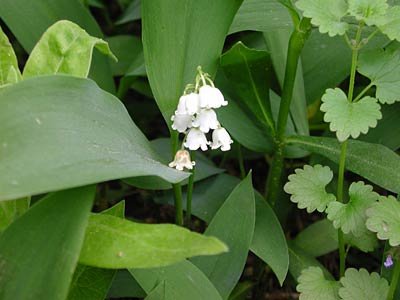
Who can resist lily-of-the-valley? They’re so small and delicate, and smell so good, and you have to get close to photograph them so there’s lots of green in the background and plenty of contrast.
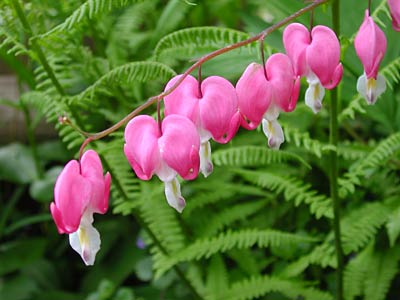
The bleeding hearts are another perennial. That’s what’s in bloom this early, mostly. The lighting was nice and soft and indirect when I took these.
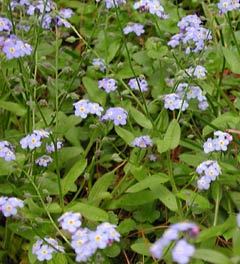
Forget-me-nots. These are biennials, not perennials, and this is one of their years. There are a zillion of them in Arlene’s rock garden.